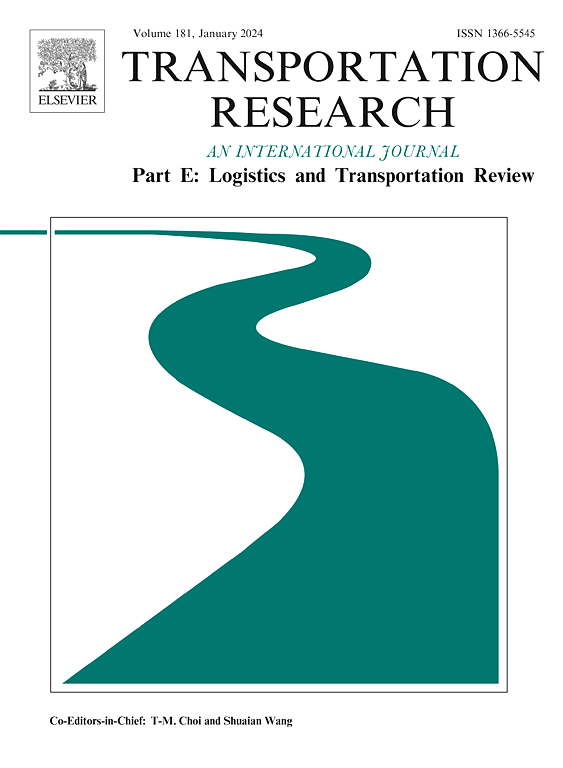Optimizing on-demand ride-hailing services in two-sided coupled markets with impatient riders
IF 8.3
1区 工程技术
Q1 ECONOMICS
Transportation Research Part E-Logistics and Transportation Review
Pub Date : 2025-04-12
DOI:10.1016/j.tre.2025.104106
引用次数: 0
Abstract
This paper examines the optimal design of dynamic pricing strategies for a coupled ride-hailing market with the coexistence of ridesharing and non-ridesharing services. Riders may switch between ridesharing and non-ridesharing alternatives to maximize individual utility, which results in demand diversion. Due to the imbalance between demand and supply, riders may become impatient towards long waiting times, leading to reneging in the coupled ride-hailing systems. We first establish dynamic meeting models for ridesharing and non-ridesharing separately to characterize temporal matching patterns. Meantime, the demand diversion generated by rider switching and reneging rate resulting from rider impatience towards waiting times are integrated into the dynamic meeting models. We derive the conditions on trip fares and commission rates to ensure the existence of the coupled ride-hailing market. We then analyze the effects of the dynamic pricing strategy on the market characteristics, including waiting times and market demand. Moreover, we formulate a Markov Decision Process (MDP) model to optimize dynamic pricing strategies and the corresponding aggregated matching between demand and supply. Finally, we develop the Proximal Policy Optimization (PPO) algorithm to solve the proposed MDP model and an iteration method that uses a Lookahead algorithm to estimate the market state. Our numerical experiments reveal that higher trip fares and commission rates should be adopted under the optimal dynamic pricing strategy compared to the fixed pricing strategy. We also demonstrate the effectiveness of dynamic pricing strategy in improving system performance and matching rate. If riders are more patient with waiting times, the platform operator can improve the trip fares for ridesharing riders to better manage demand, which helps to enhance the matching rate. Meantime, both the reneging rate and the level of demand diversion can be decreased.
求助全文
约1分钟内获得全文
求助全文
来源期刊
CiteScore
16.20
自引率
16.00%
发文量
285
审稿时长
62 days
期刊介绍:
Transportation Research Part E: Logistics and Transportation Review is a reputable journal that publishes high-quality articles covering a wide range of topics in the field of logistics and transportation research. The journal welcomes submissions on various subjects, including transport economics, transport infrastructure and investment appraisal, evaluation of public policies related to transportation, empirical and analytical studies of logistics management practices and performance, logistics and operations models, and logistics and supply chain management.
Part E aims to provide informative and well-researched articles that contribute to the understanding and advancement of the field. The content of the journal is complementary to other prestigious journals in transportation research, such as Transportation Research Part A: Policy and Practice, Part B: Methodological, Part C: Emerging Technologies, Part D: Transport and Environment, and Part F: Traffic Psychology and Behaviour. Together, these journals form a comprehensive and cohesive reference for current research in transportation science.

 求助内容:
求助内容: 应助结果提醒方式:
应助结果提醒方式:


